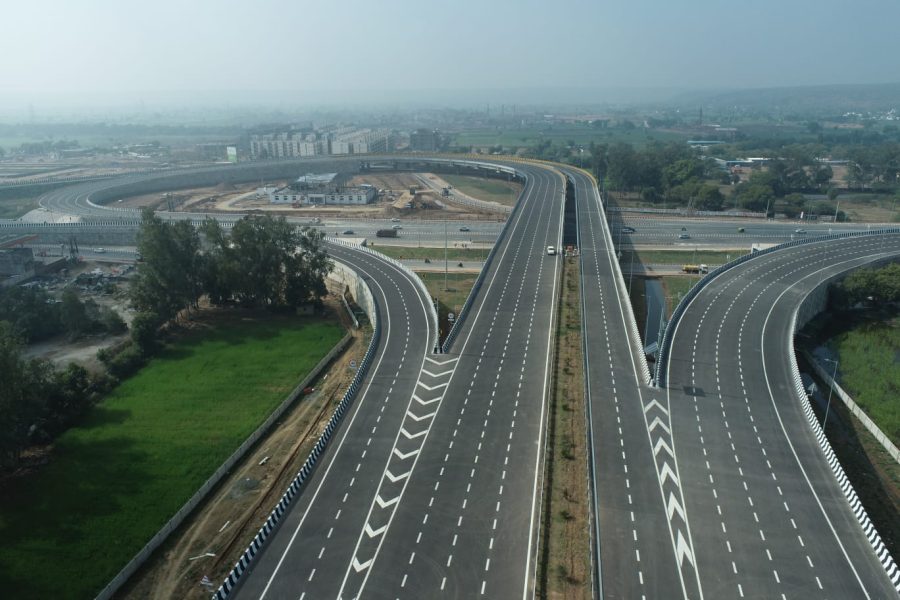
All about the Delhi-Mumbai Expressway, a section of which will open today

Prime Minister Narendra Modi is all set to inaugurate a section of the Delhi-Mumbai Expressway — touted to be India’s longest, once completed — in Rajasthan on Sunday (February 12). Here is all you need to know about the much-hyped access-controlled greenfield expressway, stated to be an engineering marvel, and how it promises to bring several cities in north, north-western, and western India closer.
Aesthetic night views from the architectural marvel #Delhi_Mumbai_Expressway. Have a look!!#BuildingTheNation #PragatiKaHighway #GatiShakti pic.twitter.com/akjlyDVwnw
— Nitin Gadkari (@nitin_gadkari) February 10, 2023
About the Delhi-Mumbai Expressway
Total distance: 1,386-km
Total cost: Over Rs 1,000 crore
States covered: Delhi, Haryana, Rajasthan, Gujarat, and Maharashtra
Major cities to be connected: Delhi-NCR, Jaipur, Kota, Faridabad, Dausa, Ratlam, Godhra, Vadodara, Surat, Alwar, and Mumbai
Land acquired: 15,000 hectares across Delhi, Haryana, Rajasthan, Gujarat, and Maharashtra
Number of lanes: Currently eight but can be expanded to 12
The #Delhi_Mumbai_Expressway is the first expressway that developed with a 21-meter median on principles of forgiving highways allowing inward expansion.#PragatiKaHighway #GatiShakti #BuildingTheNation pic.twitter.com/Z4oulKM8Ko
— Nitin Gadkari (@nitin_gadkari) February 9, 2023
Major interchanges: More than 40; to bring Kota, Indore, Jaipur, Bhopal, Vadodara, and Surat closer
Top speed: 120 kmph for all vehicles, helping save 300 million litres of fuel and 800 million kg of carbon emissions annually
Driving time between Delhi and Mumbai: The expressway promises to cut down driving time between the Capital and the financial capital by half — to only 12 hours. The distance has been shortened by 180 km, from 1,424 km to 1,242 km.
Wayside amenities: Total 94 amenities, including electric vehicle (EV) charging stations, dedicated lanes for EVs, helipads, and trauma care centres.
Green footprint: It is supposed to be the first expressway in entire Asia to have animal overpasses and underpasses to minimise the impact on Ranthambore Wildlife Sanctuary.
Traffic management: The expressway boasts state-of-the-art automated traffic management system.
Construction details: Reportedly, 12 lakh tonnes of steel will be used to build the Delhi-Mumbai expressway, which is equivalent to 50 Howrah Bridges, according to Road Transport and Highways Minister Nitin Gadkari. Cement consumed will be 80 lakh tonnes, enough to build Statue of Unity 350 times over. It will also be the first highway to have a 21-meter median. The project promises to generate 10 crore man-days of employment.
Expected completion date: Early 2024
Also read: A new world record set during Delhi-Mumbai expressway construction
For the construction of #Delhi_Mumbai_Expressway around 12 lakh tons of steel are to be consumed which is equivalent to 50 Howrah Bridges. The project is going to generate 10 Cr man-days of employment.#BuildingTheNation #PragatiKaHighway #GatiShakti pic.twitter.com/QM7sZFAMOA
— Nitin Gadkari (@nitin_gadkari) February 10, 2023
About the stretch to be inaugurated on Sunday
To connect: Sohna in Haryana and Dausa in Rajasthan
Total distance: 246 km
The Jaipur interchange: An interchange at 180 km goes directly to Jaipur, which can now be reached in about 2 to 2.5 hours instead of 5.5 hours previously
Entry/exit points: The Delhi-Dausa stretch will have 8 entry/exit points
(With agency inputs)

